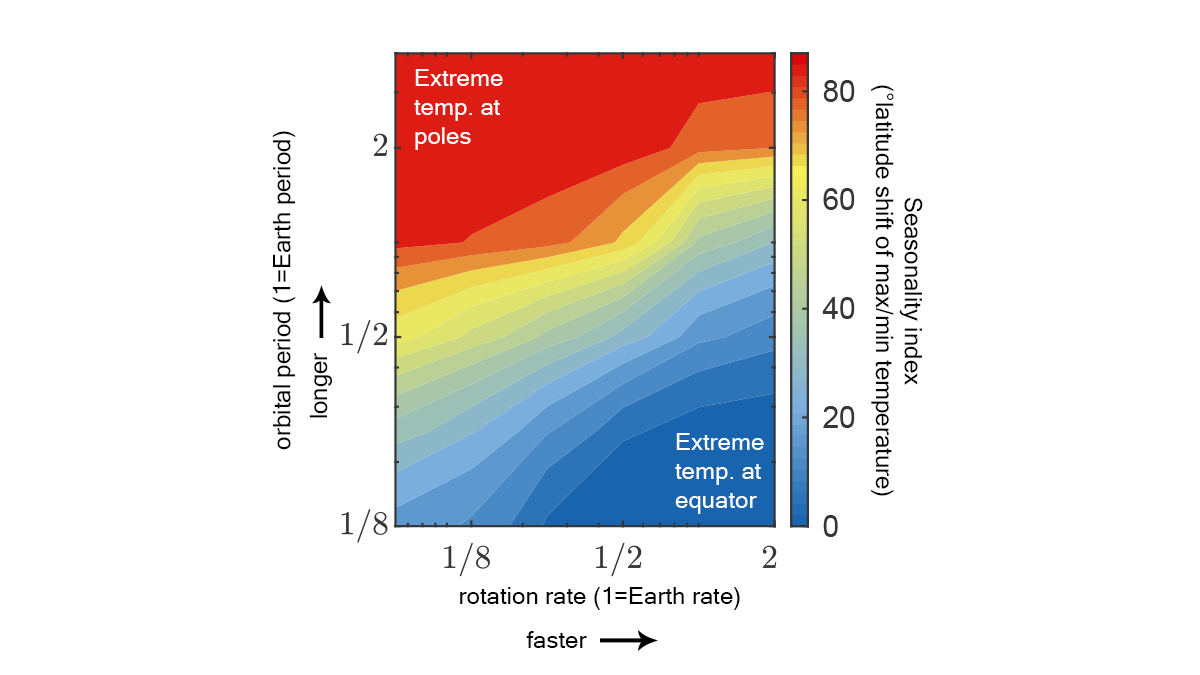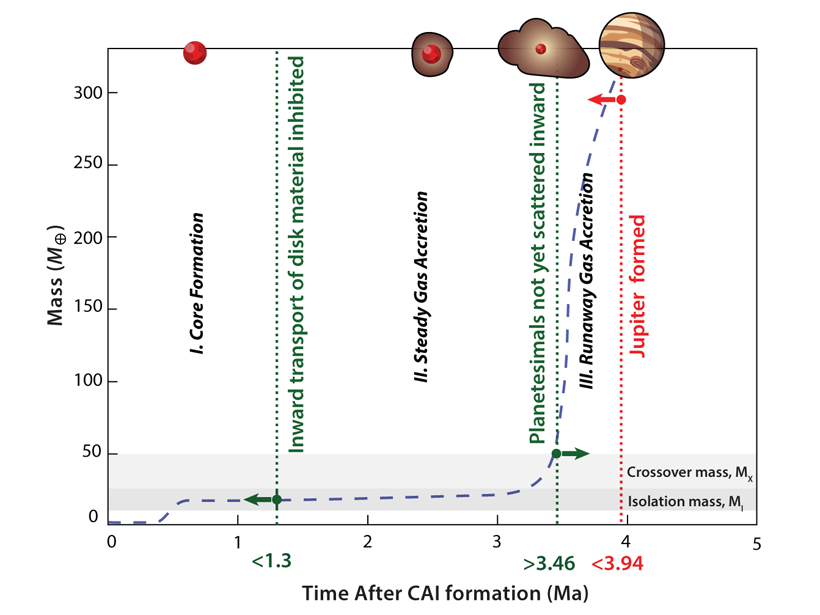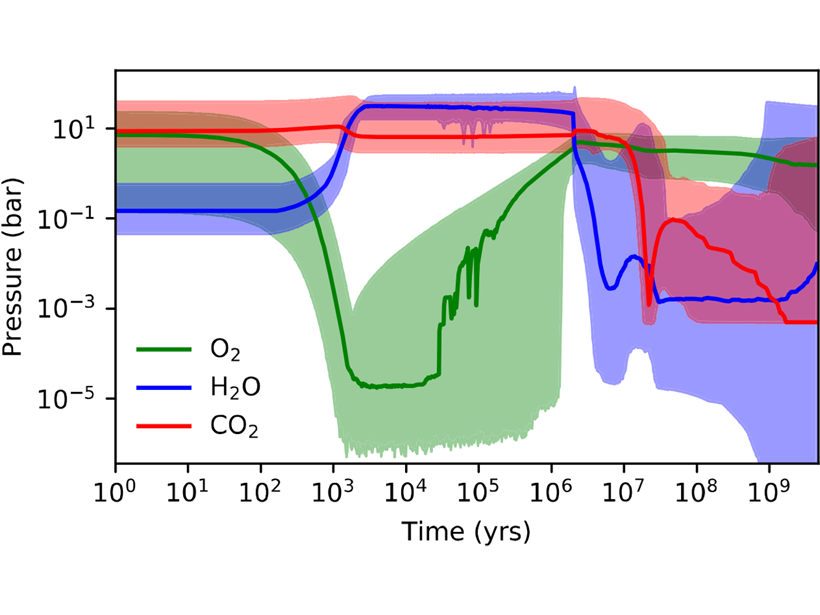We’ve long known that a planet’s orbital period and tilt determine length and intensity of seasons. We now see rotation rate matters too: max temperature shifts poleward as rotation slows.
Bethany Ehlmann
Ceres: Missing Craters, Crust Thickness Variation by Interior Convection
Models show that several puzzling features about Ceres’ topography, gravity anomalies, and crater size distribution may be explained by asymmetric hemispherical convection due to radiogenic heating.
Fingerprints of Jupiter Formation
Meteorite isotopes, meteorite paleomagnetics, and planet formation models collectively show Jupiter formation via first slow then fast collection of material by core accretion in <5 million years.
Is Atmospheric Oxygen a Planetary Signature for Life?
While some Earth-like worlds can generate significant O2 only by biology, “waterworlds” and “desert worlds” can build up O2 even without life because of chemical changes from atmosphere loss to space.
AGU Advances Goes Online
Featuring high-impact papers and a streamlined process, AGU’s new journal is ready to launch.
A Rover’s Eye View of Moving Martian Dunes
A new special issue of JGR: Planets presents findings on sand motion, morphology, and mineralogy from the Curiosity rover’s traverse of the active Bagnold dune field in Gale crater.
Developing an Updated, Integrated Understanding of Mars
The Eighth International Conference on Mars;
Pasadena, California, 14–18 July 2014






